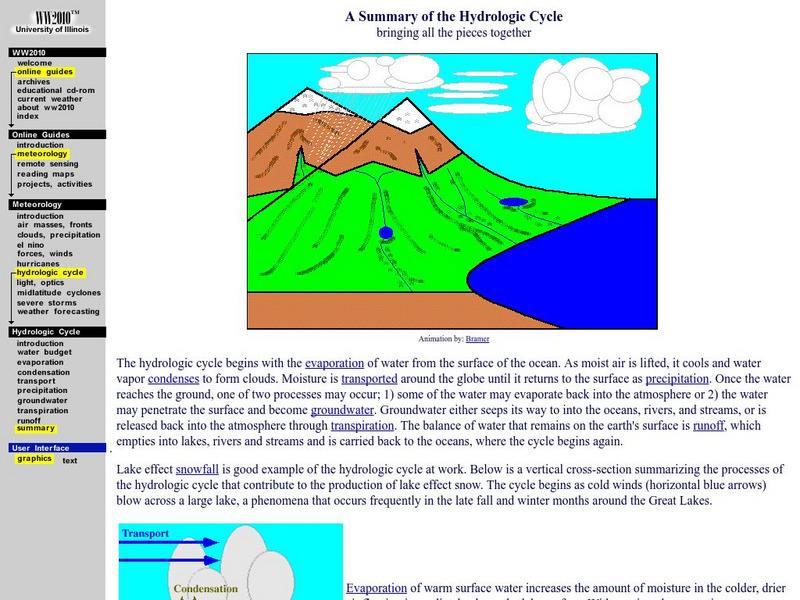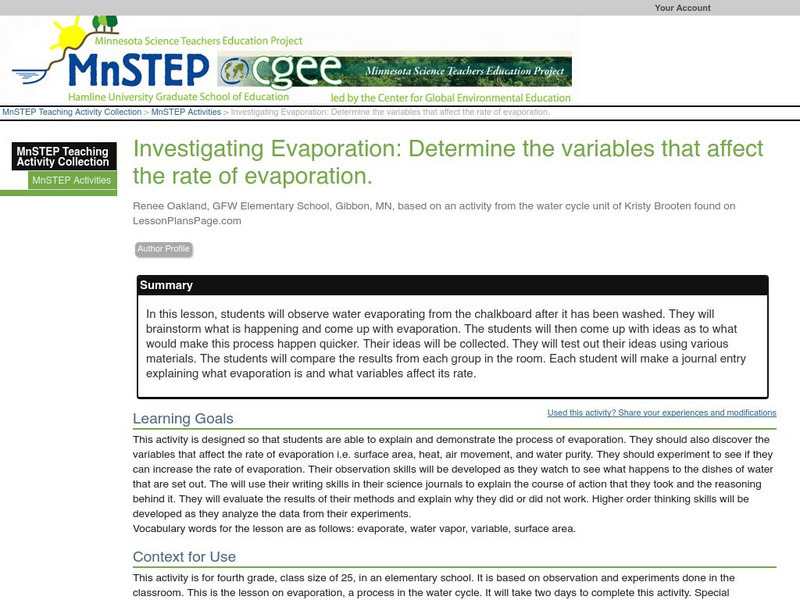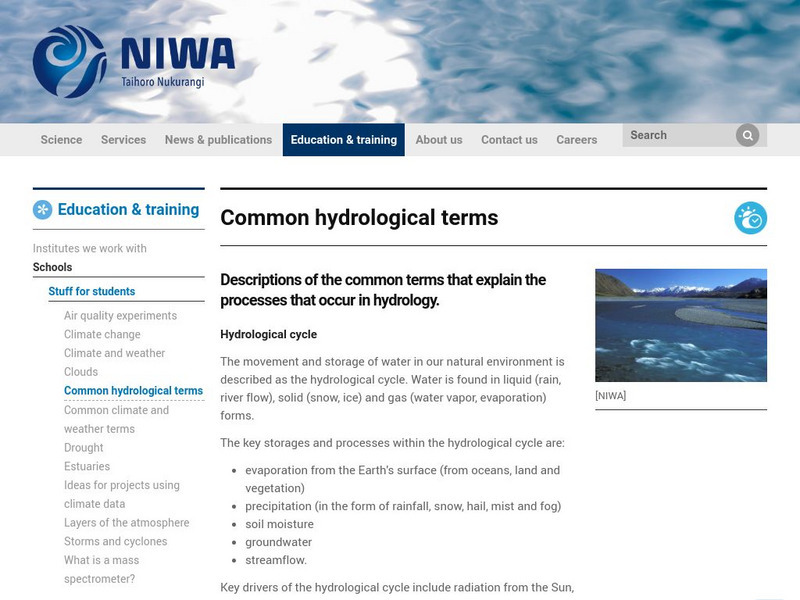Hi, what do you want to do?
NBC
Nbc Learn: Chemistry of Water
This video/lesson series explains how the structure and behavior of H2O in liquid form gives water its properties, and make it a chemical essential for life. Also in this collection: a Victorian-era depiction of the water molecule; news...
University of Illinois
University of Illinois Urbana Champaign: A Summary of the Hydrologic Cycle
Animation and text explain the water--or hydrologic--cycle, which is the process that water undergoes in nature.
Science Struck
Science Struck: A Simple Guide to the Steps of the Water Cycle
The steps in the water cycle and the processes that occur are explained in this resource.
Ministry of Education, Sports & Culture (Samoa) Government
Mesc: Samoa School Net: Rain and Water Cycle: Weather and Water Cycle
Explains the different stages in the water cycle while covering important vocabulary. Supported by lots of visuals and includes a good water cycle animation.
University of Victoria (Canada)
Weather Watch: Water Cycle
Excellent discussion and illustration of the water cycle. Explained in an easy to understand format.
Ministry of Education, Sports & Culture (Samoa) Government
Mesc: Samoa School Net: Samoa Weather: Weather and Water Cycle
This lesson explains how the water cycle works in the country of Samoa, which is surrounded by ocean. We learn how this affects weather and climate.
OpenSciEd
Open Sci Ed: 6.3 Weather, Climate & Water Cycling
Why does a lot of hail, rain, or snow fall at some times and not others? This unit contains four separate lesson sets built around answering this question. In the first two lesson sets, students explain small-scale storms. In the third...
CK-12 Foundation
Ck 12: Fifth Grade Science: Earth Science: Water on Earth
[Free Registration/Login may be required to access all resource tools.] Discusses water and where it occurs on Earth, gives an overview of the water cycle, and explains how the ocean is an integral part of the water cycle and is...
Ministry of Education, Sports & Culture (Samoa) Government
Mesc: Samoa School Net: Forces to Make Weather: Weather & Water Cycle
Explains three forces of nature and how they impact the weather. These include infrared rays from the sun, differences in air pressure, and wind flow when hot and cold air masses meet. Supported by lots of visuals.
Science Education Resource Center at Carleton College
Serc: Evaporation: Determine the Variables That Affect the Rate of Evaporation
In this lesson, students will be able to explain and demonstrate the process of evaporation while discovering the variables that affect the rate of evaporation.
US Geological Survey
Usgs: Water Science for Schools Uses of Saline Water
This U.S. Geological Survey website explains a variety of uses for saline water. Pie graphs and bar graphs are used to illustrate the various uses. Click Home to access the site in Spanish.
US Geological Survey
Usgs: "Thirsty? How 'Bout Seawater?"
This U.S. Geological Survey website explains the desalinization method used by some communities to change sea water into drinking water. Click Home to access the site in Spanish.
Other
Northern Michigan University: Clouds and Precipitation
Find out about the Hydrologic or Water Cycle - precipitation, rain, sleet, hail, snow, and clouds are explained with accompanying illustrations.
Alabama Learning Exchange
Alex: All About Clouds
This lesson uses hands-on activities and trade books along with websites to explain the formation of clouds. This lesson may be used in conjunction with a weather unit.
NASA
Nasa: What Is Ocean Color?
This site from NASA explains the meaning behind the different colors of the oceans. Gives information as to the role of phytoplankton in the color of the oceans and affects of the carbon cycle on the oceans.
Other
Niwa: Common Hydrological Terms
A glossary of terms that describe the processes that occur in hydrology. Glossary explains evaporation, precipitation, soil moisture, groundwater, and stream flow.
OpenSciEd
Open Sci Ed: Net Logo: Chloroplasts and Food Model
The simulation shows the relationship between the inputs and outputs in the chloroplasts of plant, that can help explain how they convert water and carbon dioxide to glucose and water with the help of energy absorbed from light.










